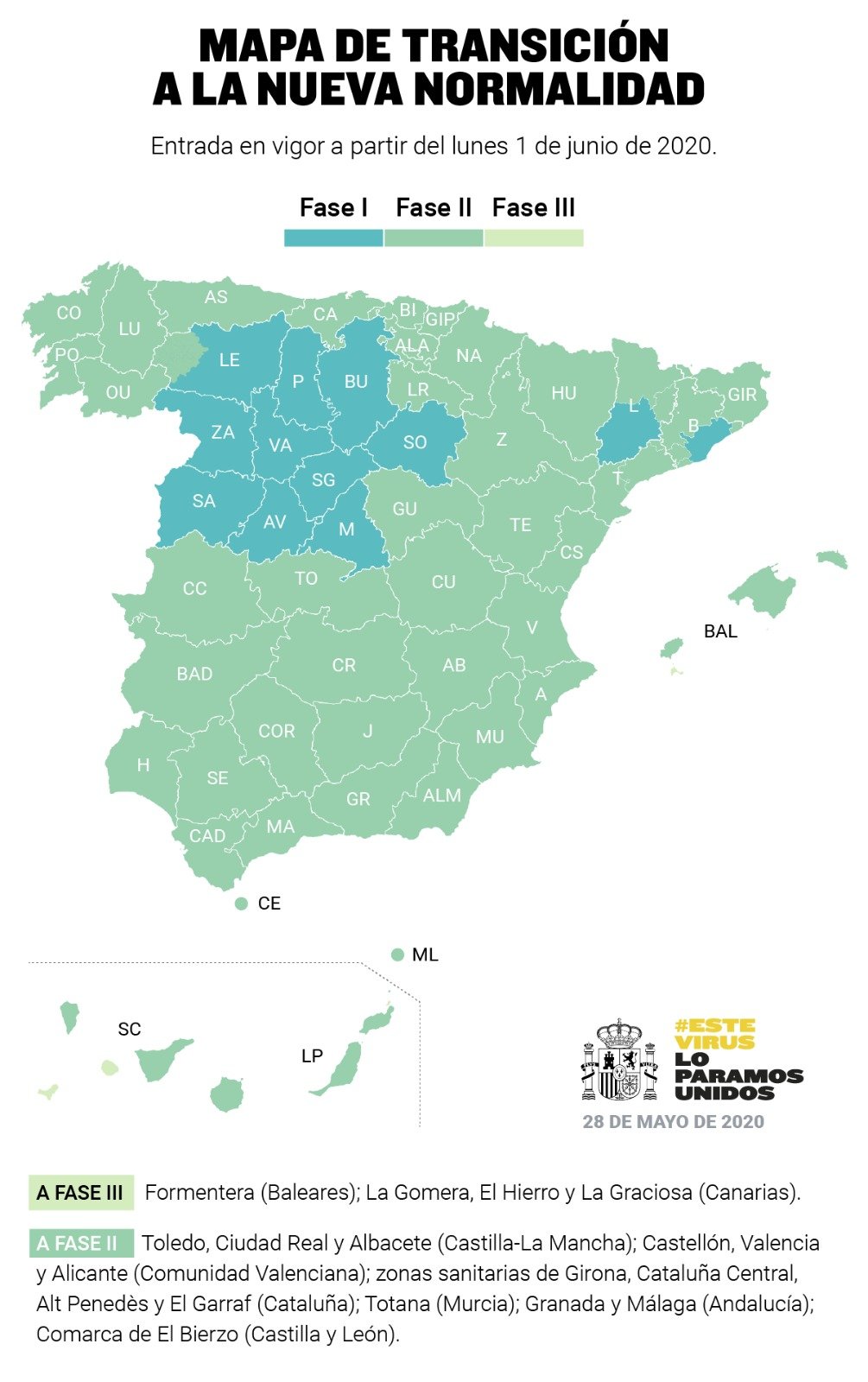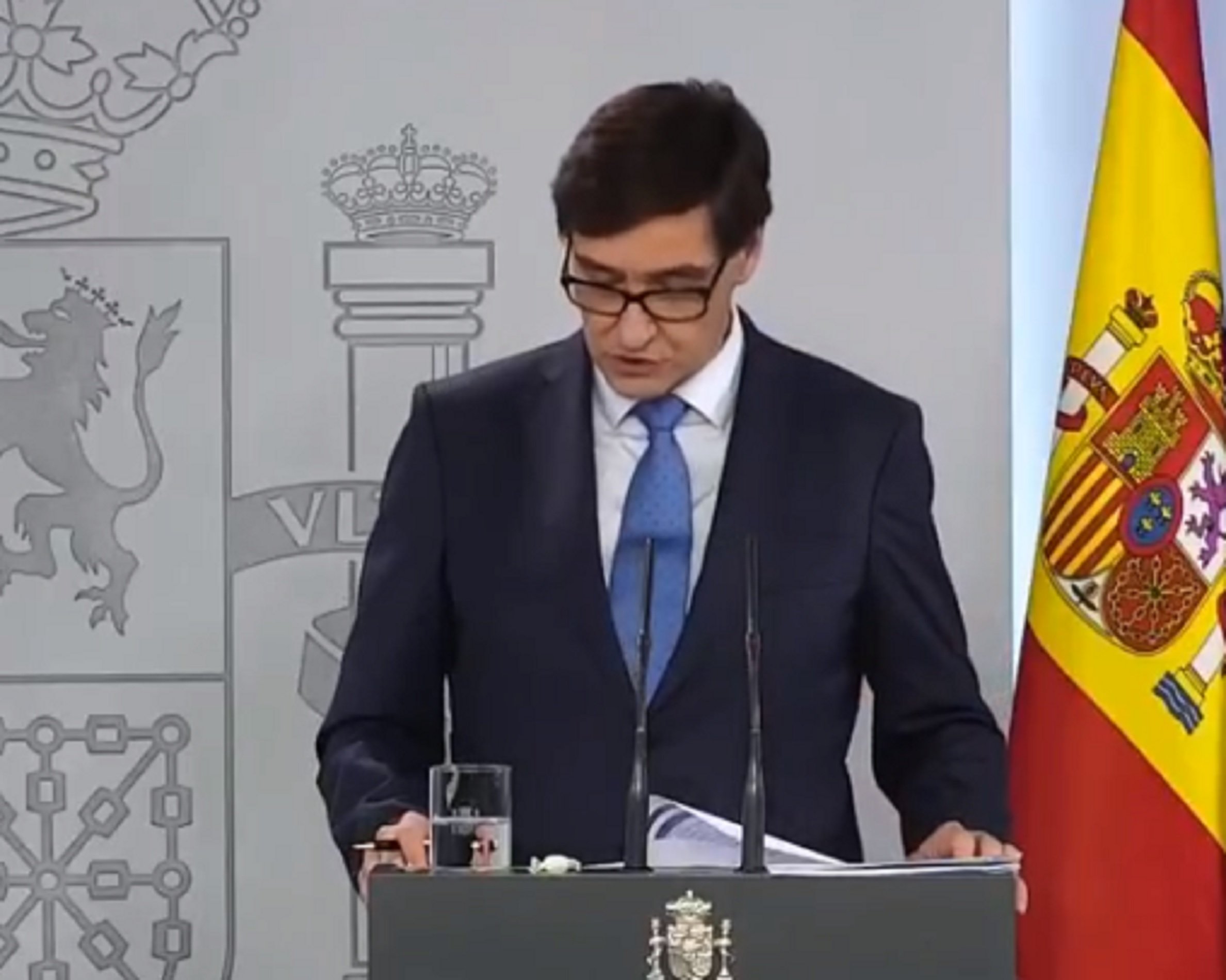Four new parts of Catalonia will move on to Phase 2 of coronavirus de-escalation from next Monday 1st June: the health regions of Girona and Catalunya Central and the counties of Alt Penedès and Garraf. The Spanish health ministry has once again accepted the proposal made by the Catalan authorities. However, after this week's detection of a resurgence of Covid-19 cases in Lleida, the Catalan health service decided not to propose the change of phase for Lleida health region, which will continue in Phase 1 along with most of the Barcelona metropolitan region.
Meanwhile, the ministry led by Salvador Illa has also accepted the reunification as a single health unit of Barcelona city and most of its metropolitan region. It will be effective from Monday and will demolish the metaphorical 'wall' which up till now has prevented many normal movements between municipal Barcelona and its surroundings.
The new increase in Covid-19 cases in Lleida began after the Catalan ministry proposed the transition of this health region to Phase 1 two weeks ago and continued to increase with its entry into force a week later. That is why the region was ruled out of making the next jump in the de-escalation phase.

As for the rest of Spain, with the exception of Madrid and most of Castilla y León, all the other territories which remained in Phase 1 will move to Phase 2 on Monday: all three provinces of the Valencian Country; the provinces of Málaga and Granada in Andalusia; and the three Castilla-La Mancha provinces of Albacete, Ciudad Real, and Toledo. The Bierzo county in the west of Castilla y León, will advance to Phase 2 before the rest of its autonomous region; and the Murcian municipality of Totana, whose progress had been held behind the rest of Murcia an extra week due to a series of new cases, will now move to Phase 2.
The four small territories which have been a week ahead of anyone else in Spain in this process now enter the final phase of the de-escalation, Phase 3. They are all islands: Formentera in the Balearics, and the islands of La Gomera, El Hierro and La Graciosa, in the Canary Islands.
As of Monday, around 70% of Spaniards will be in Phase 2, 30% in Phase 1 and 45,000 people in phase 3.
‘No’ to flexibility in Madrid
"We do not plan to agree to these flexibility measures," replied the health minister Illa to requests to lift further Phase 1 restrictions in the Community of Madrid. The region's government under Isabel Díaz Ayuso had called for the opening of shopping malls and for students to be able to undertake face-to-face activities to prepare for university entrance exams. "We are in favour of adhering to what is allowed in each phase," he said. He stressed that the steps proposed are already covered in Phase 2 and that Madrid is doing a good job.
"Very calm" about Lleida resurgence
Regarding the resurgence of Lleida, the health minister said he was "very calm", and attributed it to "the minister Alba Vergés's prudent attitude", an approach he wanted to "commend". He noted that this outbreak was detected early. He ruled out the need for Lleida to go backwards, to Phase 0.
Ceuta won't go back to square one
Salvador Illa also explained that another series of resurgent cases in Ceuta are "under control" thanks to the operation of early detection mechanisms. "If it remains under control, there is no indication that we need to consider a return to a previous phase," said the minister.
To find out which Catalan health region a municipality belongs to, and which phase of the process it is in, the Catalan health service website provides this page.
GUIDE | Coronavirus de-escalation: which phase am I in and what can I do?
MAP | Coronavirus infections in Catalonia by municipalities and neighborhoods
GRAPHS & DATA | Latest coronavirus statistics for Catalonia and Spain

